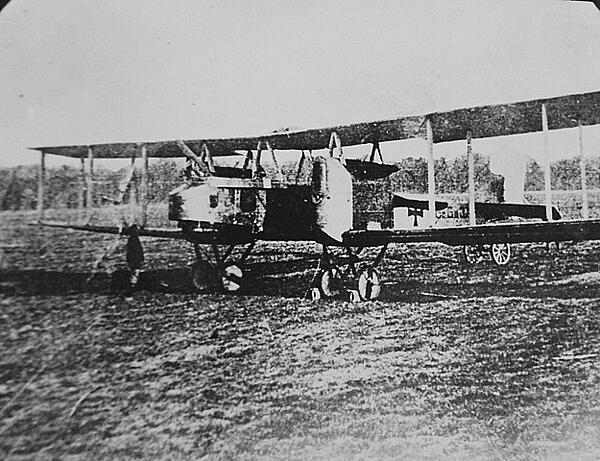Gotha Bombers
The German Gotha V bomber was the German Army Air Service’s equivalent of the Royal Flying Corps’ Handley Page O/400 bomber.
The Gotha V first entered service in August 1917 and was designed to be a heavy bomber that was able to cover more distance than the average fighter plane while having the ability to deliver a bomb load to a specific target.
As is suggested by the aircraft’s name, it is the fifth variation of the bomber, fixing previous issues including the placement of the fuel tanks into the engine compartment, which meant a crash landing could result in fuel ignition and a subsequent explosion. To rectify this issue, the Gotha V had the fuel tanks built into the fuselage.
Further innovations included having the bomb racks on the Gotha V carried externally so bomb loads were not on board. Additionally, the plane was fitted with a machine gun in its floor to provide a means of defence when being attacked from below. In total, three Parabellum G14 machine guns were fitted onto the Gotha V, with two located on its sides.

Arguably even more impressive was the inclusion of a Mercedes engine on the aircraft, which was designed to provide more power to the heavier plane - weighing 1,000 Ibs more than its predecessor - and allowing a speed of 87 miles over a range of 500 miles. However, this wasn’t actually the case.
With the Allied blockade of Germany’s ports in full swing, Germany was struggling to get hold of external supplies such as fuel. In order to achieve the numbers above the plane required higher quality fuel, and with the lower quality local fuel that was provided it was no more powerful than the Gotha IV.
As a result of the different fuel being used, the Gotha V and its increased weight was only able to fly at low altitude and so was vulnerable to Allied attacks.
The next two versions of the plane - the Gotha Va and Vb - both improved on the Gotha V, providing slightly more stability and a larger payload, respectively. However, the Allied blockade continued to hit Germany hard into 1918 so the issue of poor quality fuel was never resolved.
Despite this, the Gotha V is credited with having taken part in the largest aerial attack on England on 19tth May 1918, in the last raid of Operation Türkenkreuz. In total, 38 Gotha V’s attacked London but despite the success of earlier raids this one failed to achieve its goals. Almost 20 per cent of the aircraft were destroyed in the raid - six in combat and one during landing - which demonstrated an attrition rate that was not acceptable to German High Command. After this attack, Gotha V’s were ordered for use in support of ground forces on the Western Front.
When World War One ended, all remaining Gotha bombers were handed over the Allied forces as part of the Armistice.
MLA Citation/Reference
"Gotha Bombers". HistoryLearning.com. 2026. Web.
